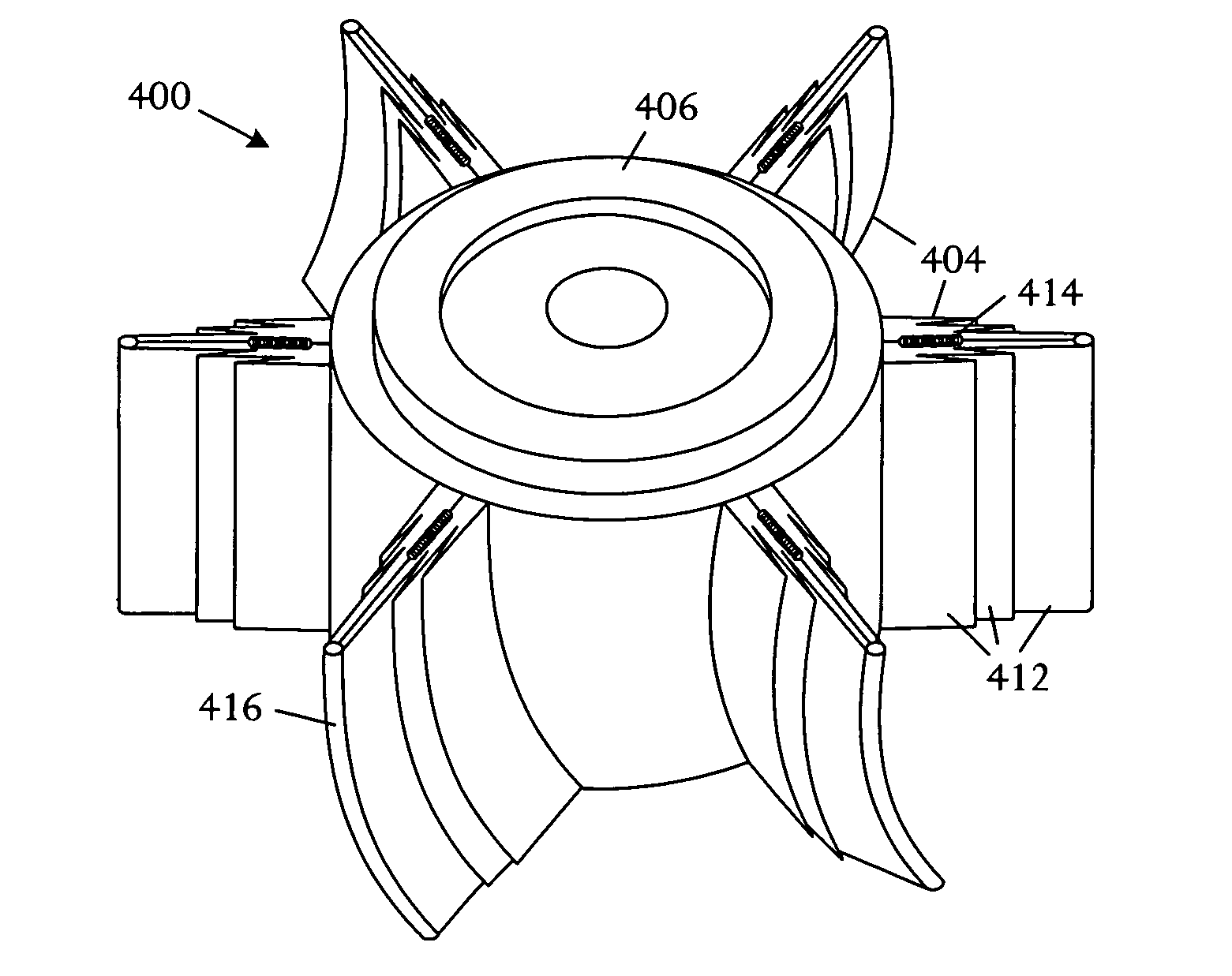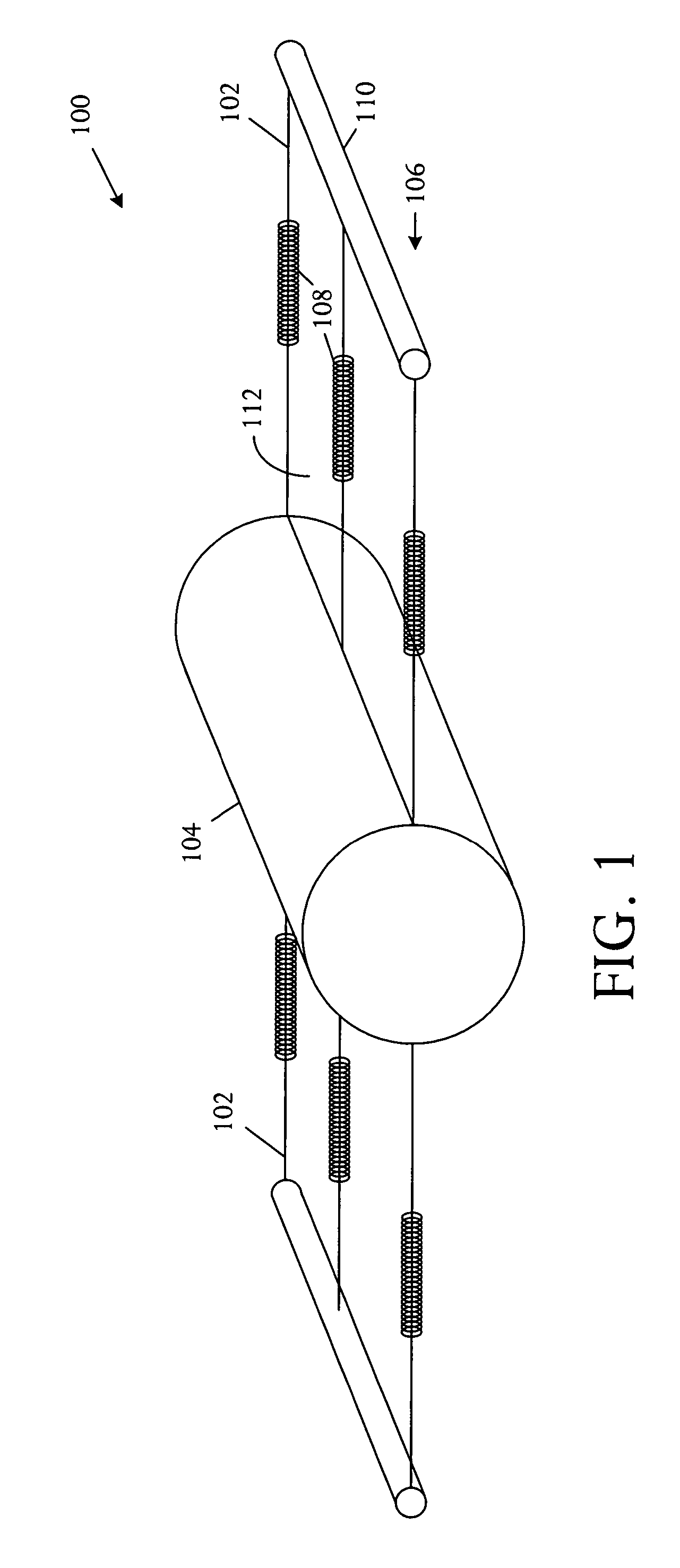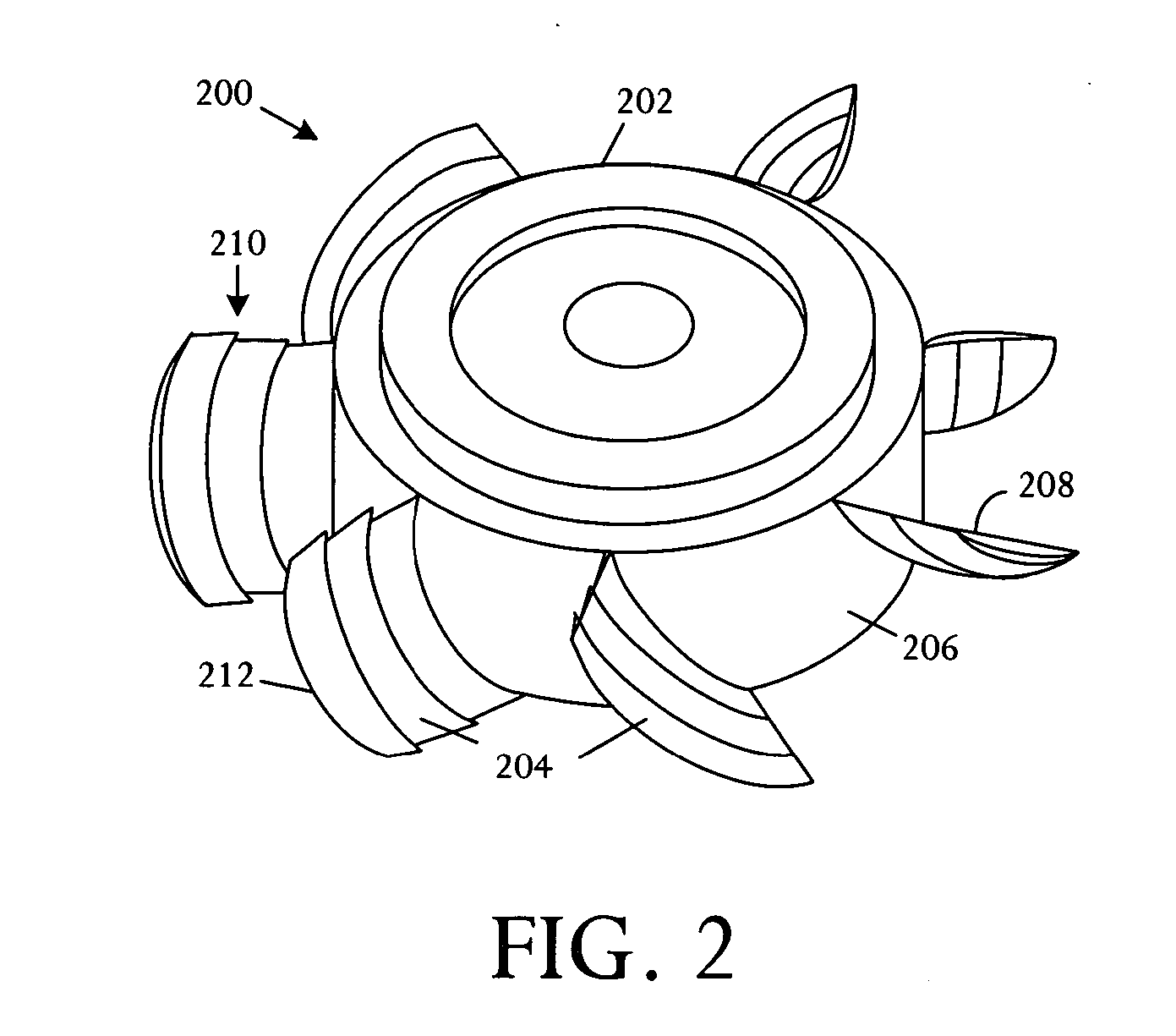Electronics cooling fan with collapsible fan blade
a cooling fan and collapsible technology, applied in the direction of rotors, vessel construction, marine propulsion, etc., can solve the problems of increasing the difficulty of system design within power and heat dissipation allowances, generating a significant amount of heat for electronic equipment contained within the enclosure, and affecting the operation of the cooling fan
- Summary
- Abstract
- Description
- Claims
- Application Information
AI Technical Summary
Problems solved by technology
Method used
Image
Examples
Embodiment Construction
[0013] Referring to FIG. 1, a schematic physical diagram depicts fundamental aspects of various fan rotor systems 100 with collapsible fan blades 102 driven by centrifugal forces. The diagram illustrates a structure and technique enabling reduction of backpressure created by blades of a failed fan. The technique exploits the centrifugal force generated when a fan motor rotates a fan rotor 104. The fan blades 102 are fabricated from a conformal material such as a flexible material, multiple linked collapsible shells, or other arrangements. A spring and mass system 106, comprising springs 108 and masses 110, is attached to a rotor 104 or motor hub and is typically formed underlying an airfoil surface 112. As the motor spins the rotor 104, centrifugal forces overcome the spring force and drive the mass 110 away from the hub 104. The centrifugal forces acting on the masses 110 can fully deploy the flexible airfoil surfaces 112 or collapsible shells, enabling the fan to deliver a pressur...
PUM
 Login to View More
Login to View More Abstract
Description
Claims
Application Information
 Login to View More
Login to View More - R&D
- Intellectual Property
- Life Sciences
- Materials
- Tech Scout
- Unparalleled Data Quality
- Higher Quality Content
- 60% Fewer Hallucinations
Browse by: Latest US Patents, China's latest patents, Technical Efficacy Thesaurus, Application Domain, Technology Topic, Popular Technical Reports.
© 2025 PatSnap. All rights reserved.Legal|Privacy policy|Modern Slavery Act Transparency Statement|Sitemap|About US| Contact US: help@patsnap.com



